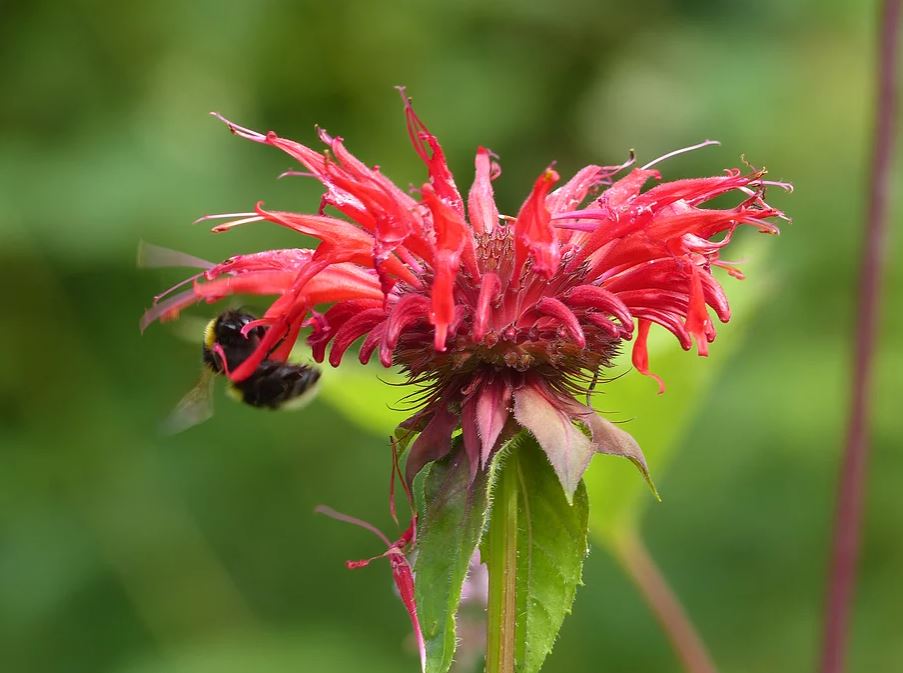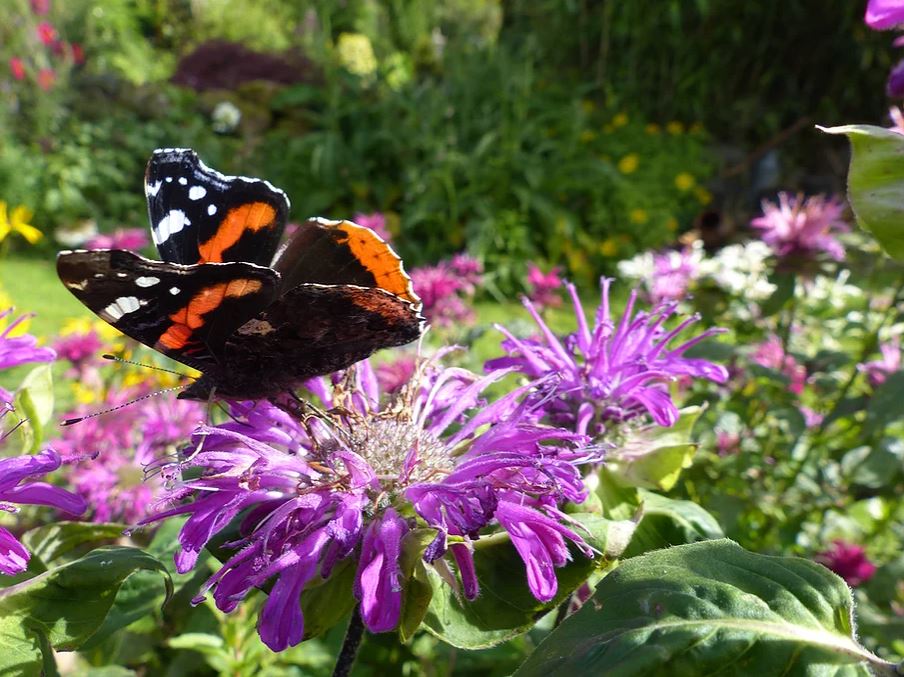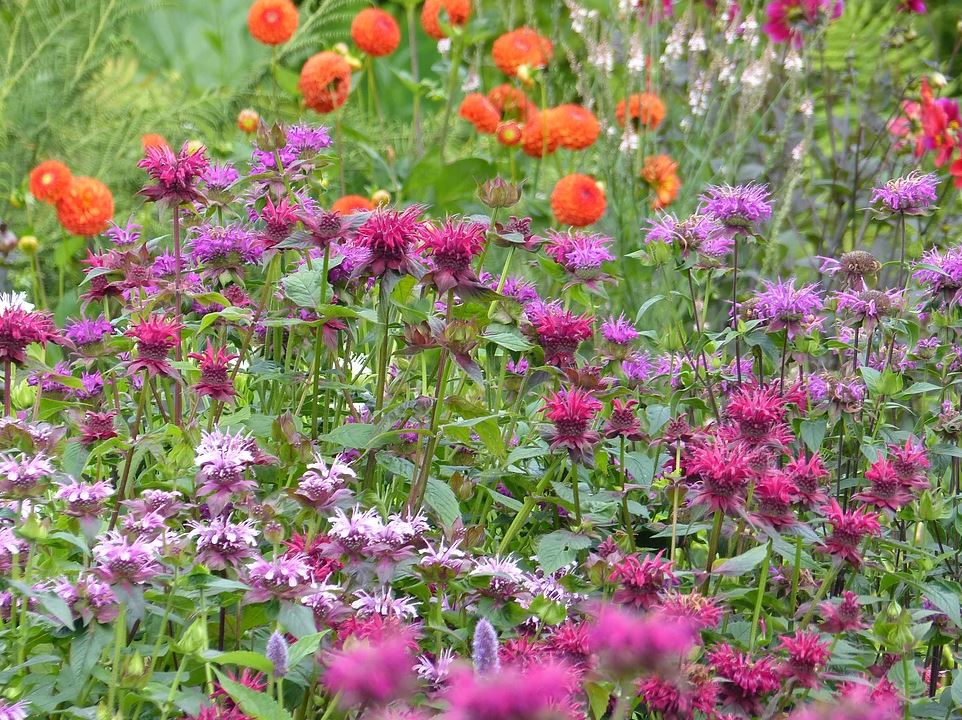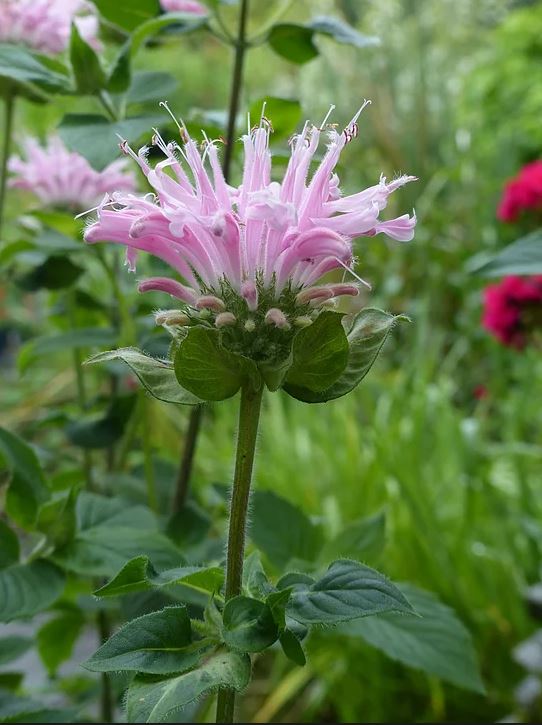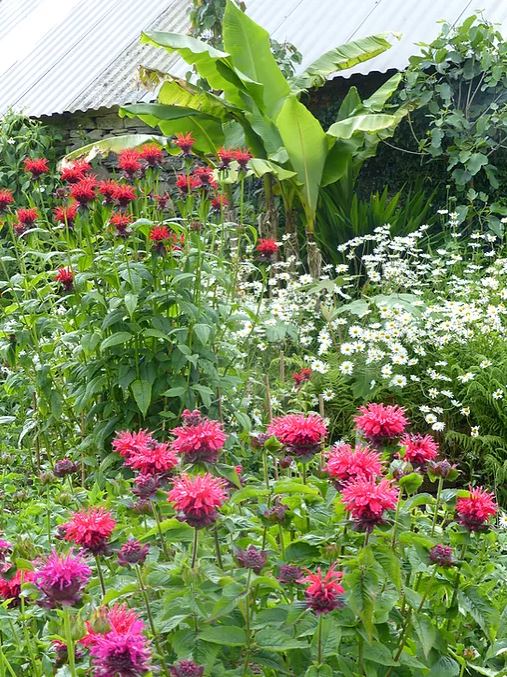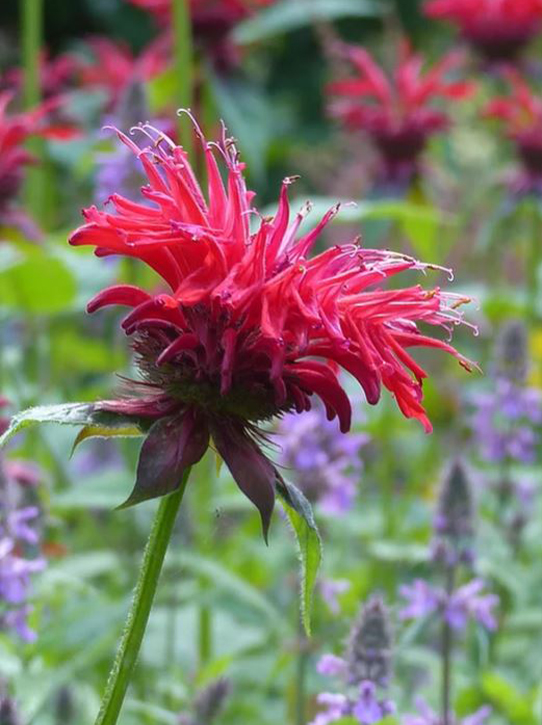The magic of Monarda rewarded with a Silver Gilt at RHS Tatton Park
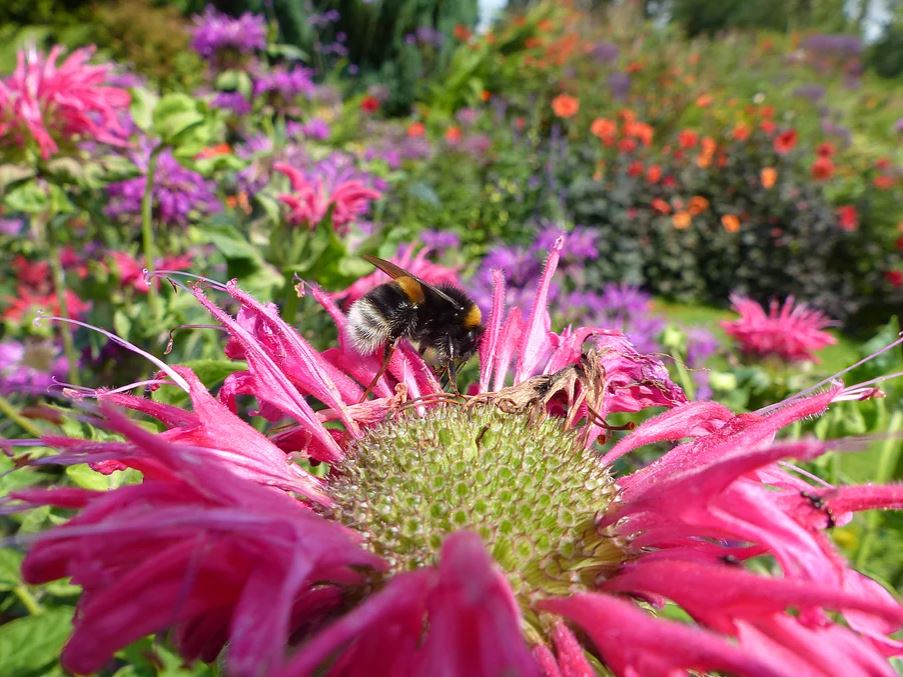
Situated by the Eastern Cleddau River beneath the beautiful Preseli Hills, in a tranquil and sheltered valley, Glyn Bach Gardens in Pembrokeshire holds a National Collection of Monarda; these beautiful plants grow well in the warm, wet, climate of West Wales. They are used throughout the garden to provide colour, form and nectar for a diverse and plentiful population of long tongued bumble bees. Short tongued bumble bees enjoy them too and access the nectaries by chewing through the base of the flower and the owners honey bees access the nectar via the same hole.
- Honey bees love the nectar
- Monarda ‘Squaw’ with garden bumble bee
- Red Admiral feeding on Monarda nectar
For owners Pete and Carole Whittaker, these unusual North American native plants were the ideal choice for their garden.
“When we came to Glyn Bach, in February 2012, we set out our key aims for our garden,” explains Pete. “It was important to us to encourage pollinators and Monarda were a natural choice due to the maritime climate in Pembrokeshire. The garden has a very varied terrain and we were able to use a large bog garden for didyma cultivars and a large hillside was ideal for fistulosa and bradburiana species.”
“We planted so many cultivars,” adds Carole, “and as we are heavily into conservation, a National Collection seemed the next natural step and we were awarded Collection status in September 2014. Since then our collection has continued to grow and we now have two polytunnels for winter cover and shade tunnels for summer cover for our many potted cultivars.”
“We were lucky to inherit an area of raised beds which are perfect for showcasing the Collection and we dug out a long border to fill almost entirely with Monarda cultivars which is a sight to behold in August each year. Monarda on the hillside are planted in colour themed borders with grasses, hemerocallis, dahlias, roses etc. to provide a rich canopy of colour.”
The result is stunning displays of jewel bright flowers cluttered with bees and butterflies.
“Monarda is one of the very best bee-friendly plants,” adds Pete. “And we actually plant up annual beds just for them.”
Congratulations to Carole and Pete Whittaker who received a silver gilt for their Monarda collection at the recent RHS Tatton Park Show in July!
“We were awarded a Silver Gilt which we were thrilled to bits with. Showing has been a fantastic, tiring and extremely rewarding thing to do, but more importantly – along with the film about our stand that appeared on the BBC – we have shown the general public how fabulous Monarda really are,” they said.
- One of the Monarda exhibition beds at Glyn Bach Gardens
More about Monarda
Biology
These beautiful plants are members of the Lamiaceae family, meaning ‘landing platform’ as each flower has two lips. The inflorescence or flower head is made up of multiple flowers with a deep nectary and have developed to be pollinated by Hummingbirds and long tongued pollinators. In the right conditions, Monarda will spread out from rhizomatic roots and will be long lived, particularly the didyma cultivars. Some cultivars however, will die after their second year of flowering so it is advisable to take divisions to ensure continuity.
Ideal Planting Conditions
All Monarda need rich soil, as they are hungry plants, which has to be improved every year.
Red flowered and some pink Monarda have been developed from wild didyma species and prefer moist conditions. They are ideal for planting in boggy conditions, where they will spread out happily from their rhizomatous roots, along the surface of the soil.
Violet, purple, and pink Monarda are generally fistulosa species and these plants love moisture in summer but dislike winter wet. If the cultivars become dry at the roots in summer they will develop powdery mildew from stress. In winter, fistulosas grow naturally in regions with high snow fall which protects them from winter wet, but the spring thaw floods the roots to promote new growth. They have adapted to windy conditions by forming adventitious roots along the length of the stem which can root if the stem is blown down.
A further grouping are the cultivars crossed with bradburiana, a species found in the southern USA states and can tolerate drought and poor soil. A few cultivars have incorporated menthifolia as a cross; these are very beautiful, but may be short lived so it is essential to take divisions.
And the final group are Monarda grown from seed annually. These tend to be citriodora crosses.
Medicinal Qualities
Monarda are Thymol rich and act as a natural antiseptic for staphylococcal infections. Leaves infused as a drink soothe a sore throat. A balm made from their leaves relieves bee stings almost immediately, hence the synonym ‘Bee Balm’. The Huron Native Americans use a balm to cure their teenagers acne.
- Monarda ‘Fishes’
- Monarda ‘Knights Rose’ with ‘Cambridge Scarlet’ in background
- Monarda didyma






